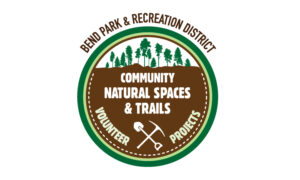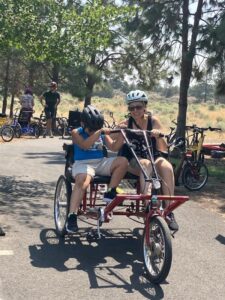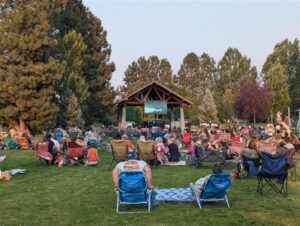In 1939, Dean and Lily Hollinshead bought 160 acres that had been held by a series of owners since the homestead was first patented in 1908. They leased the Timberlane Ranch to Jim and Virginia Matson who sharecropped the land and raised dairy cows from 1940 – 1947. The Hollinsheads moved to Timberlane in 1949 and raised Tennessee Walker and American Saddlebred horses, at first leasing and then selling off the dairy operation. Dean preferred horses to cows and logging to farming! Besides logging, Dean was also a packer for dude rides into the mountains and provided horses and equipment for movies being produced in the area. Dean and Lily even appeared as extras in some of these films. Lily was a teacher and a 4-H leader for the Red Riders mounted drill team, and the Hollinsheads were charter members of the Rim Rock Riders Club. Timberlane was often the site for buckaroo breakfasts and fundraising events.
Dean Hollinshead was recycling and repurposing decades ahead of the current sustainability movement. He moved cabins to Timberlane from old Camp Abbot and Wickiup, and moved seven houses and a large barn to Timberlane from the Fort Rock area. The horse barn was dismantled to be moved, and Dean hired a craftsman to rebuild the barn exactly as it had been originally constructed. Several of the original buildings remain on the property, most notably the beautiful Hollinshead Barn.
In 1956 the Hollinsheads began to sell off parts of Timberlane to developers until they retained just 16.5 acres of the original 160. At the 1971 groundbreaking for Stover Park, which had once been part of Timberlane, Lily Hollinshead expressed the hope that their remaining land would eventually become a park. Discussions began between the Hollinsheads and Vince Genna in 1974 for the district to purchase the land. Fundraising efforts were not successful, and in the end the Hollinsheads donated 11 acres, selling the rest to their neighbors and friends, George and Shirley Ray. The district was finally able to purchase the remaining acreage from the Rays in 1984 through a Land and Water Conservation Fund grant.
The community gardens were started in 1988. The horse barn was renovated as an event venue and opened to the public in 1995 at Hollinshead Barn. The daughter and son-in-law of Jim and Virginia Matson restored the original Sharecroppers House (now containing a museum) in time for Virginia’s 80th birthday in 1997.
Learn more about Hollinshead Park.












